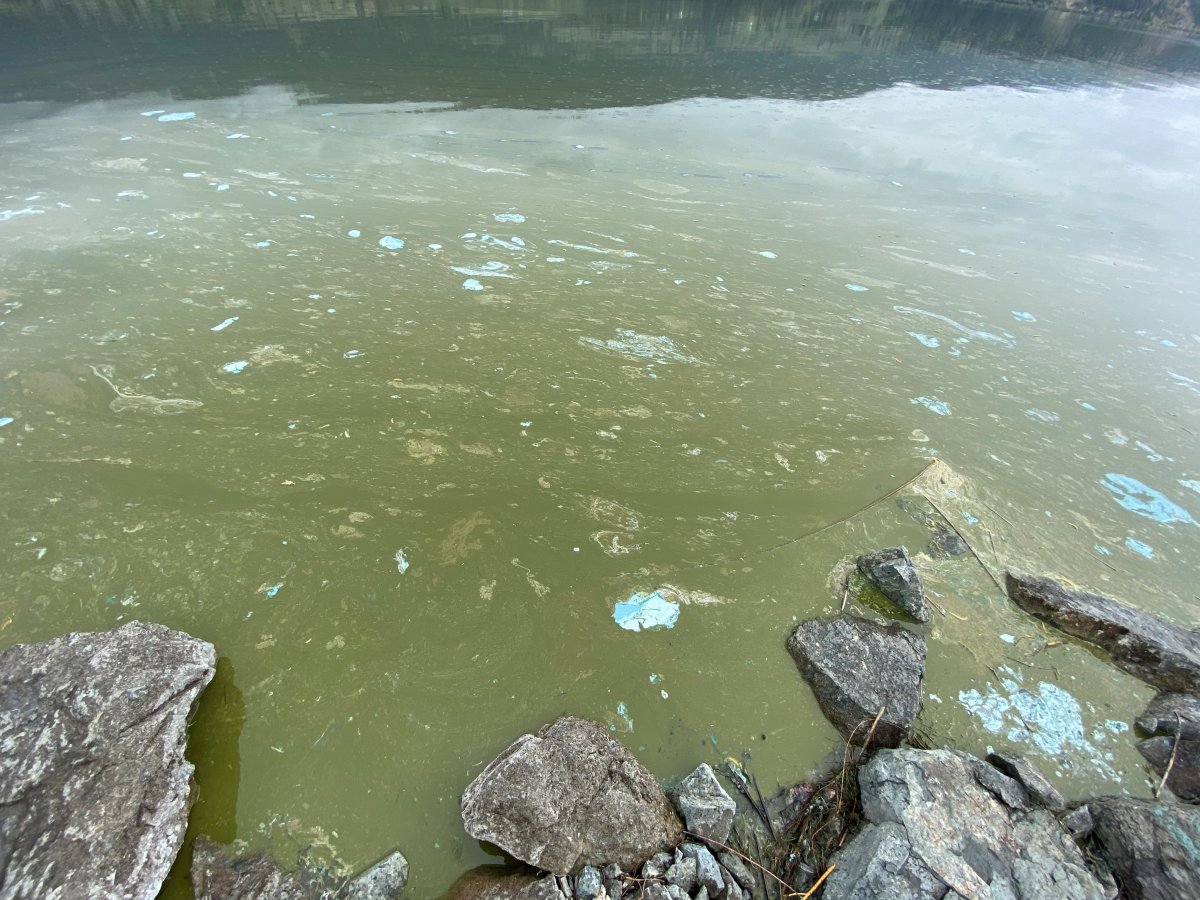With the arrival of warm weather comes the annual risk of algae blooms in local waterways.

This week, Interior Health issued a public service announcement about algae. It’s a natural part of aquatic ecosystems but can also be harmful.
“Blue-green algae or cyanobacteria can produce several types of toxins that can be poisonous to people, pets or livestock,” said Interior Health.
“Cyanobacteria blooms often cause the water to look bad and may also smell bad.”
According to one website, the Natural Resources Defense Council (NRDC), an algae bloom is the overgrowth of microscopic algae or algae-like bacteria in fresh, salt or brackish waters.
“Depending on the type of algae or bacteria that cause it, an algal bloom may produce bad-smelling scum, foam, froth, or a paintlike slick,” said the NRDC. “Algal blooms can be many colours, including blue-green, yellow, brown, pink, and red.”
The health agency says two of the most important ways to reduce algae-bloom risk is to rinse off with clean water after swimming and to not consume lake water.
Interior Health added these precautions as well:
- If there is a bloom always use caution.
- Avoid all direct contact with a bloom.
- If contact is made, rinse your body with clean water.
- If you see a bloom, recreational activities are discouraged.
- If the bloom is in your drinking water source, consider using an alternate source.
- Boiling the water will not remove any toxins.
- Consider providing pets and livestock with an alternate source of drinking water.
The public can report algae blooms online.
Interior Health says it does not routinely test for algae blooms, adding that they can change all the time.

The health agency says symptoms from exposure to cyanobacteria can include:
- Headaches
- Nausea
- Fever
- Sore throat
- Dizziness
- Stomach cramps
- Diarrhea
- Abdominal pain
- Vomiting
- Muscle aches
- Mouth ulcers
- Blistering of the lips
- Rashes and irritation of the ears and eyes.
More information about cyanobacteria can be found on Interior Health’s website and on HealthLinkBC.
- Canadian man dies during Texas Ironman event. His widow wants answers as to why
- ‘Sciatica was gone’: hospital performs robot-assisted spinal surgery in Canadian first
- Canadians more likely to eat food past best-before date. What are the risks?
- Treatment from female doctors leads to lower death rates, study finds




Comments